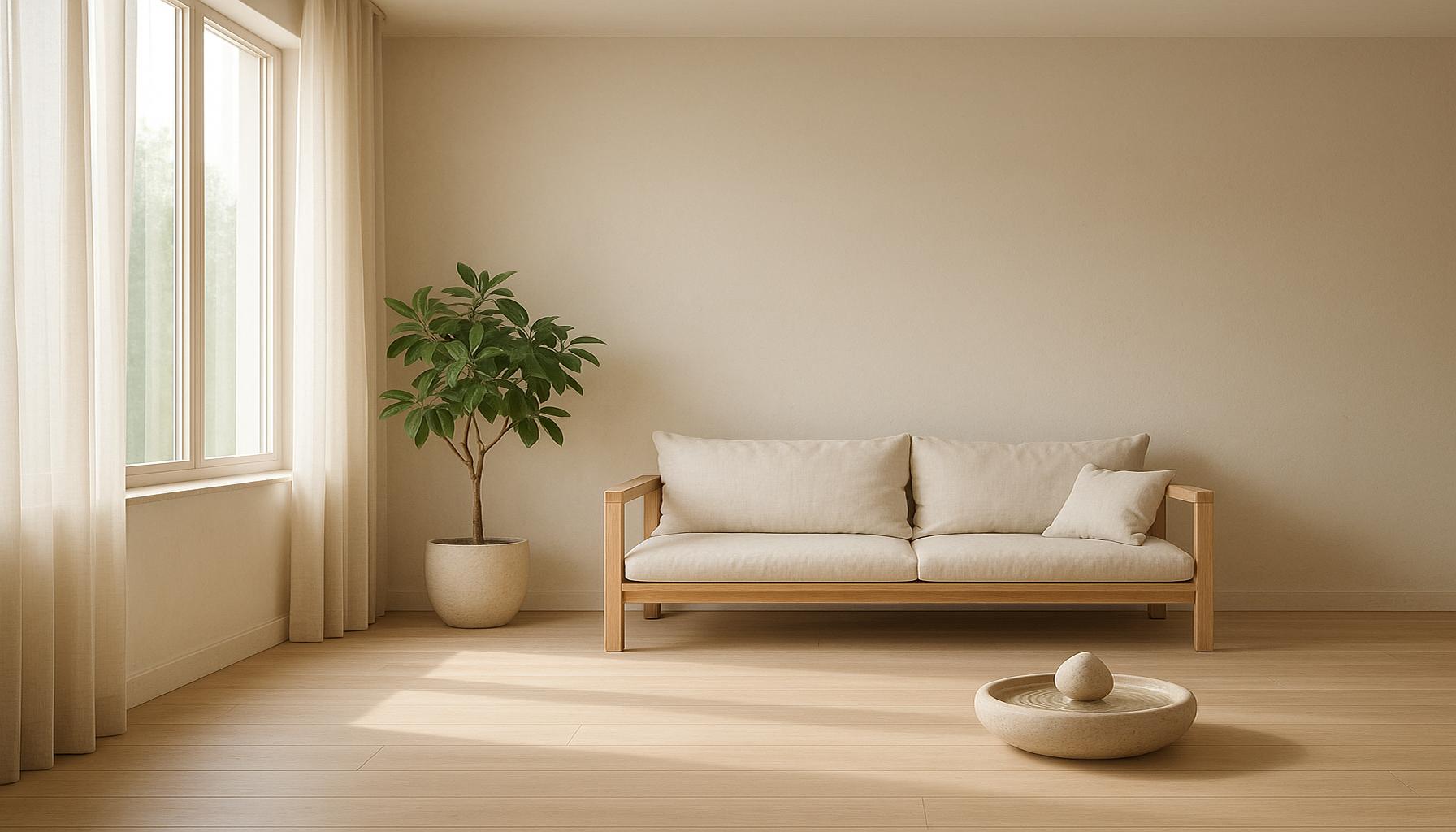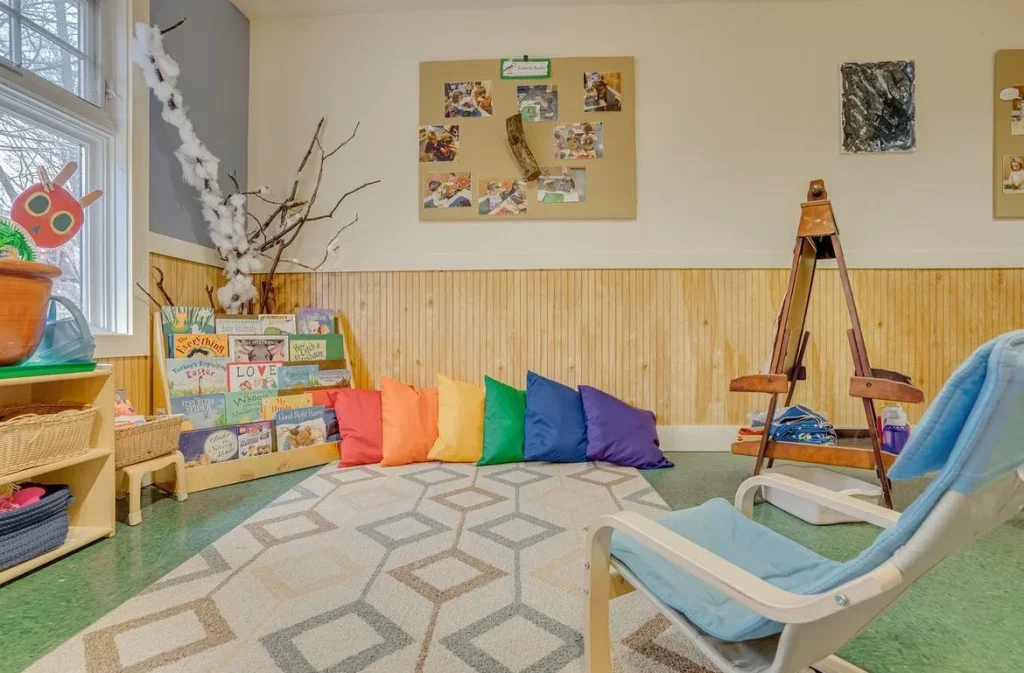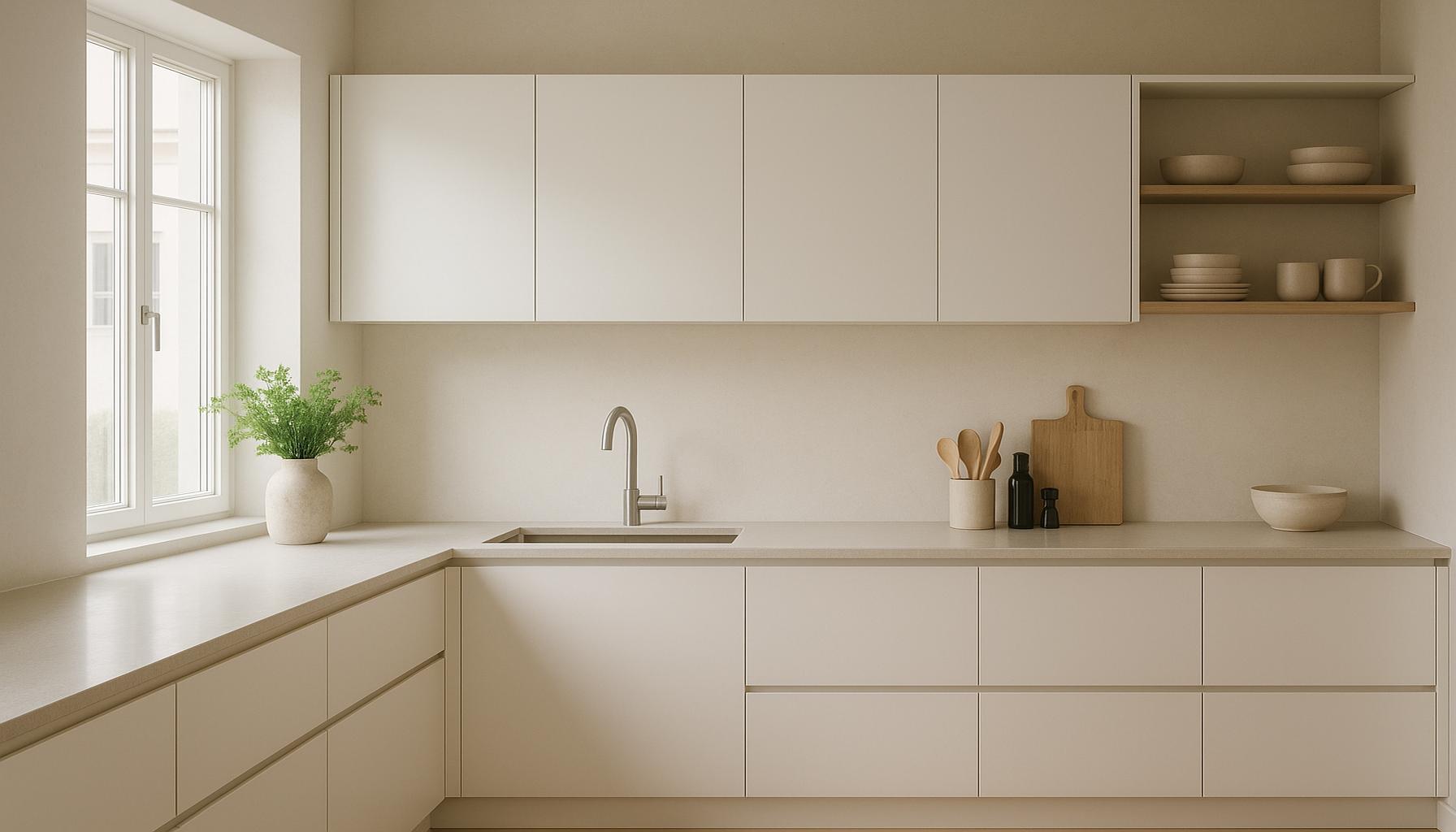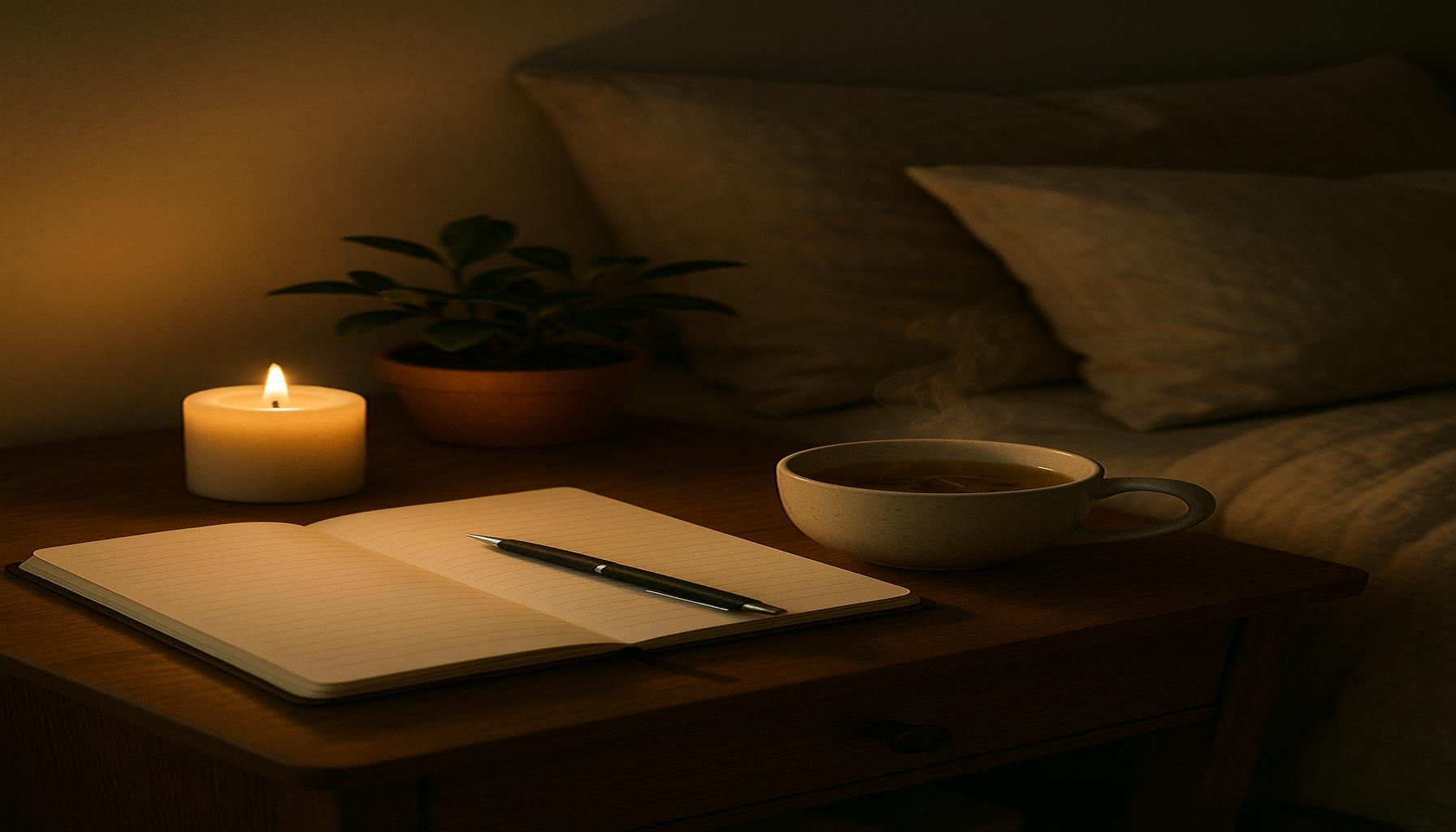The Art of Creating Calm Spaces: How Minimalism Can Reduce Anxiety

Creating Tranquility in a Chaotic World
In the hustle and bustle of contemporary life, where deadlines loom and demands seem endless, finding peace can often feel elusive. As urban centers grow, stress and anxiety become unwelcome companions, infiltrating our minds and environments alike. Interestingly, the chaos of accumulated clutter in our living and working spaces significantly contributes to our mental turmoil. Embracing minimalism, therefore, serves as a powerful tool for cultivating tranquility and navigating the delicate balance of modern existence.
What is Minimalism?
Minimalism transcends mere aesthetic appeal; it embodies a holistic lifestyle choice that emphasizes simplicity and intentional living. This philosophy encourages individuals to reevaluate their relationship with material possessions and choose quality over quantity. It prompts us to:
- Declutter your space by systematically removing items that no longer serve a purpose or bring joy. For instance, a living room might transform from a crowded environment filled with decorative knick-knacks to a serene space accentuated by a single beautiful piece of art.
- Focus on quality over quantity, selecting items that are durable and meaningful rather than acquiring multiple products that contribute to chaos. Investing in a few exceptional pieces of furniture or clothing can enhance one’s life without overwhelming it with excess.
- Enhance mental clarity through a streamlined environment. A well-organized workspace can lead to clearer thinking, prompting greater productivity and creativity.
Why Does It Matter?
Numerous studies indicate that a cluttered environment can exacerbate feelings of anxiety and contribute to a sense of overwhelm. When each surface is loaded with objects, our minds struggle to focus and relax. By cultivating a calm space through minimalism, you may experience:
- Reduced stress levels, as a peaceful atmosphere can foster relaxation and mental ease. Consider how a clutter-free home office can elevate your mood, making work feel less burdensome.
- Improved focus when distractions are minimized. Academic research highlights that students studying in uncluttered environments show better retention and understanding, demonstrating the power of minimalism in enhancing concentration.
- Enhanced creativity in an organized setting. Many artists and creators find that a simplified space allows them to think more freely, opening pathways to innovative ideas and projects.
As you delve into the principles of minimalism, you may find that adopting this lifestyle leads to not only a decluttered physical environment but a profound transformation in mental well-being. The practice of transforming everyday spaces into havens of calm is not just another fleeting trend; it represents a significant journey toward building a happier and more serene life. So, take the first step towards minimalism—your mind and body will thank you for it.
DISCOVER MORE: Click here to learn how to achieve personal freedom</p

The Transformative Power of Minimalism
Minimalism is more than just a design aesthetic; it is a transformative approach that centers on the idea of living with less in order to gain more—more space, more clarity, and most importantly, more peace. This philosophy aligns seamlessly with the increasing pressures of modern life, effectively countering the overwhelming distractions that can lead to anxiety. Recent surveys indicate that a staggering 77% of Americans experience regular physical symptoms of stress, with clutter being a significant contributor. By intentionally minimizing our environments, we can create calm spaces that serve as sanctuaries for the mind.
Creating Calm Through Intention
The essence of minimalism lies in intentionality. Every item in your space should either serve a purpose or bring joy. This principle encourages a proactive mindset when curating your environment. Start with these foundational steps to cultivate your serene space:
- Begin with Assessment: Evaluate each room in your home or workspace. Consider which areas feel overwhelming and which spaces promote calm. Take notes on items that contribute to stress versus those that enhance well-being.
- Set Clear Goals: Decide what functionality you want from each space. If your aim is to create a peaceful living room for unwinding, avoid cluttering it with work-related materials, as this will dilute its intended purpose.
- Practice the One-In, One-Out Rule: To maintain your newly created calm, commit to the principle of removing one item for every new item you bring into your space. This practice ensures that accumulation does not creep back into your life.
By taking a step back and scrutinizing our surroundings, we position ourselves to make informed choices about what we allow into our lives. This careful discernment reduces feelings of being overwhelmed and paves the way for a more centered existence. When a space is deliberately crafted to prioritize simplicity, the mind automatically begins to shift towards tranquility.
The Science Behind Calm Spaces
Research consistently supports the correlation between physical environments and mental health. A study published in the Journal of Environmental Psychology found that individuals who engaged in a minimalist lifestyle reported lower anxiety levels and enhanced mood compared to those in more cluttered settings. The act of decluttering isn’t merely cosmetic; it has profound psychological implications:
- Emotional Relief: Clearing away the chaos allows the mind to focus on the present, mitigating impulsive thoughts that can spiral into anxiety.
- Empowerment: The process of taking control over your environment fosters a sense of empowerment and agency, countering feelings of helplessness that often accompany stress.
- Mindfulness: A simpler space encourages mindfulness, where individuals can tune into their thoughts and feelings without the distractions and demands imposed by excess clutter.
As we explore the art of creating calm spaces, it becomes evident that minimalism is not merely a trend but a meaningful lifestyle change that promotes mental clarity and peace. It invites individuals to reclaim their environments and, in doing so, embrace a happier and more contented way of living.
The Role of Minimalism in Reducing Stress
Minimalism goes beyond a simple aesthetic; it transforms the way we interact with our environments, fostering a sense of tranquility and clarity. Studies have shown that decluttering and simplifying our spaces can significantly lower stress levels. By eliminating excess, we can create a focused environment that promotes mental clarity, enabling us to concentrate on what truly matters. When the mind is not bombarded by distractions, daily tasks become less overwhelming, and we begin to experience more peace and satisfaction in our lives.
Spaces that Inspire Calmness
Creating calm spaces typically involves specific design choices that enhance the overall ambiance. Neutral color palettes, natural materials, and minimalist decor play a crucial role in establishing serenity. Incorporating elements such as greenery can also connect us with nature, which has been proven to have calming effects, improving mood and reducing feelings of anxiety. Moreover, lighting is essential; opting for soft, ambient light can evoke a warm atmosphere that encourages relaxation.
Minimalism and Mental Health
The relationship between minimalism and mental health is profound. As we begin to prioritize fewer possessions, we often cultivate a more intentional lifestyle. This shift can reduce the anxiety associated with consumerism and social pressures. Furthermore, by adopting a minimalist approach, we may find it easier to practice gratitude for what we have, promoting a positive mindset that combats anxiety. Embracing minimalism can lead to improved emotional well-being, encouraging us to focus on experiences rather than material possessions.
| Category | Advantages |
|---|---|
| Mental Clarity | Less clutter leads to improved focus and productivity. |
| Emotional Well-Being | Reduces anxiety levels and fosters a positive mindset. |
Exploring the principles of minimalism not only encourages physical decluttering but also nurtures emotional resilience. By embracing this lifestyle, you open the door to creating enriching environments that support mental health and promote a greater sense of calm in your everyday life.
DISCOVER MORE: Click here to learn how minimalism can transform your life
The Psychological Benefits of a Decluttered Environment
Beyond the aesthetic appeal, the psychological benefits of embracing minimalism are substantial. A clutter-free environment significantly enhances not only productivity but also emotional well-being. A study by Princeton University Neuroscience Institute indicated that the brain’s ability to process information can be adversely affected by a cluttered setting. When there is too much going on in our surroundings, the cognitive load increases, leading to a fragmented state of mind. The solution? Deliberate minimalism.
Fostering Focus and Productivity
In the realm of productivity, minimalist spaces are paramount. Research suggests that well-organized workplaces contribute to an increase in efficiency by as much as 20%. By minimizing the surrounding distractions, individuals can concentrate better on their tasks at hand. For instance, maintaining a clean desk by eliminating non-essential items not only reduces the visual chaos but encourages a workflow that is uninterrupted by anxiety-inducing clutter.
- Clear Workspaces: A desk filled with papers, gadgets, and decor can be overwhelming. Aim for a clean surface with only your essential tools: a computer, a notepad, and perhaps a singular motivational item.
- Organizational Systems: Implement functional storage solutions that encourage keeping only necessary items. Transparent containers or labeled folders help maintain order and clarity.
Creating Sanctuary Spaces for Relaxation
Minimalism transcends beyond work environments; it is equally transformative in personal spaces where relaxation and calmness are paramount. Many Americans report struggling to unwind at home due to the enduring presence of clutter. Infusing minimalist principles into your living spaces can foster an environment where you can recharge mentally and emotionally.
- Declutter Your Living Area: Only keep furniture that serves a purpose for relaxation. A minimalist sofa with soft textures placed strategically can create a sense of comfort while inviting tranquility into your space.
- Mindful Decor: Choose art and decorations that evoke joy and peace, such as serene landscapes or abstract pieces with calming colors. Limit the number of decor items to avoid overwhelming the senses.
The sensory overload that often accompanies clutter can impede the ability to feel at ease. In minimalist homes designed for relaxation, elements like soft lighting, open spaces, and natural materials coalesce to promote a soothing atmosphere. For example, incorporating soft, diffused lighting or earthy materials like wood can yield a sense of grounding that strategically combats anxiety-inducing stimuli.
Embracing Nature and Outdoor Spaces
Another vital aspect of creating calm spaces lies in embracing connections with nature. Research from Harvard University suggests that time spent in nature serves as a powerful antidote to stress and anxiety, reinforcing the minimalist mentality of keeping natural elements as central fixtures in your home.
- Incorporate Plants: Houseplants have been shown to improve air quality and provide a calming effect. Consider easy-care options like snake plants or succulents, which require minimal maintenance.
- Maximize Natural Light: Whenever possible, allow natural light to flow into your spaces. This has been linked to improved mood and overall mental health.
By merging the principles of minimalism with elements of nature, individuals can curate a refreshing environment that nurtures not just the physical, but also the emotional self. Minimalism, with its focus on intentionality and simplicity, helps create calm spaces that act as antidotes to the chaos of modern life.
DISCOVER MORE: Click here to enhance your daily focus
Conclusion: Embracing Minimalism for a Tranquil Mind
In a world inundated with noise, distractions, and overwhelming stimuli, the art of creating calm spaces through minimalism emerges as a vital antidote to anxiety. By intentionally simplifying our environments—be it in our homes, workplaces, or personal sanctuaries—we not only enhance aesthetic appeal but also foster mental clarity. The connection between a decluttered space and psychological well-being cannot be overstated; research underscores the notion that a minimalist setup can lead to significant boosts in focus and emotional tranquility.
As we’ve explored, the benefits of minimalism extend beyond mere organization; they manifest in the form of heightened productivity and enhanced relaxation. The incorporation of serene decor, natural elements, and mindful organization supports a holistic approach to well-being that is achievable for anyone willing to embrace these principles. By prioritizing essential items and nurturing an atmosphere of calm, individuals can effectively combat the pervasive anxiety found in modern life.
Moreover, integrating nature into your minimalist spaces not only beautifies the environment but also reinforces a sense of connection and peace. Studies corroborate that natural elements have profound effects on reducing stress, highlighting the synergies between minimalism and environmental awareness.
Ultimately, adopting a minimalist lifestyle is about intentionality—choosing to surround ourselves with what inspires contentment, clarity, and serenity. As you embark on your journey toward creating calm spaces, remember that every small step counts. Take the time to reflect on your belongings, your environment, and your emotional needs. The reward will be a tranquil mind and a life enriched with purpose and harmony.


